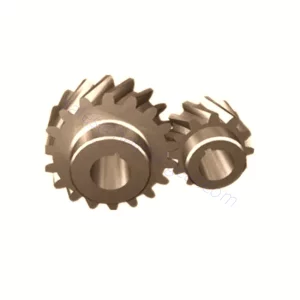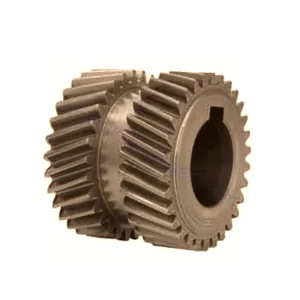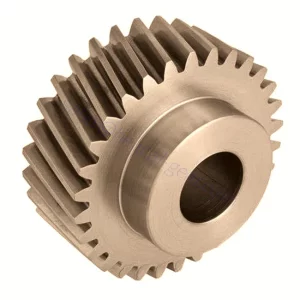Helical Gear
Single Helical Gear
Helical gears are quieter and operate more efficiently than spur gears. The teeth of a helical gear are cut at an angle to the gear face so that they gradually mesh as the gear rotates. The tangent to the helix angle varies in proportion to the thrust load. A helical gear is an excellent choice for high thrust because it produces far less friction and requires fewer bearings.
In addition to higher load capacity, helical gears are quieter and have less friction than spur gears. Since helical gears mesh in small increments, they are better suited for large loads and are also more efficient in high speed and high load applications. They are also a good choice for conveyor belts and elevators, and they can be used with parallel or non-parallel shafts.
As one of the leading helical gear manufacturers, suppliers, and exporters of mechanical products, We offer helical gear and many other products.Please get in touch with us for details.
Mail:[email protected]
Single helical Gears are more suited for mechanical drives in which each application requires a “unique” design for powers, speeds, configurations, and environment. Single helical gears provide easy and reliable means of adjustment in the field for remote, difficult-to-access applications, such as offshore platforms.
Similarities between single helical gear and double-helical gear
- Like every gear drive, these two are also engagement-type mechanical drives. A chain drive is another example of the same. Though belt drive is one mechanical drive, it is one friction drive.
- In both cases, teeth are cut in the form of a helix on the pitch cylinder of the gear blank. The hand of the helix is, however, different in two cases.
- In both cases, the teeth of two mating gears come in contact gradually. Thus vibration, noise, and teeth wear rate is reduced substantially compared to spur gear.
- Both are applicable for transmitting motion and power between parallel shafts only. A bevel gear can send energy between intersecting beams, while worm gear can be employed for non-intersecting non-parallel posts.
Differences between single helical gear and double-helical gear
| Single Helical Gear | Double Helical Gear |
|---|---|
| A single helical gear has teeth inclined in any one direction (either left-hand helix or right-hand helix). | The double-helical gear consists of two identical gears that are jointed on the same axis and have teeth in opposite directions (one has a left-hand helix, and the other has a right-hand helix). |
| Single helical gears develop axial thrust force and exert the same on corresponding bearings. It also generates radial force. | The resultant thrust force developed in double helical gear is zero. Thus it exerts no axial load on bearings. But radial force exists as usual. |
| The power transmission capacity of a single helical gear is comparatively low. | Double helical gears can transmit enormous power for the same size and module. |
| Single helical gears are cheaper. | Double helical gears are costlier as design and fabrication are complex and time-consuming. |
| High precision is usually not desired during the alignment of the gears. | Two helical gears must be aligned precisely. Otherwise, thrust force will not balance properly, and the consequence will be negative vibration. |
| Because of thrust load, a high helix angle cannot be used. Helix angle for single helical gear usually varies from 15º – to 20º. | Due to the canceled thrust load, a high helix angle (20º – 45º) can be advantageously used in double helical gears. |
| The efficiency of single helical gear is comparatively low. | Double helical gears can provide higher efficiency. |
| The bearing span (distance between two bearings) is short. | The bearing span is longer due to a central relief groove in between two gears. |
| Single helical gears are suitable for mechanical drives or power transmission requirements, where each application usually requires a unique design for powers, speeds, and configuration. | Double helical gears are suitable for high power transmission requirements in cranes, marine drives, or turbines. |




